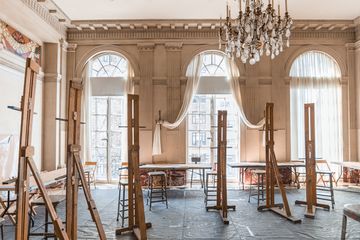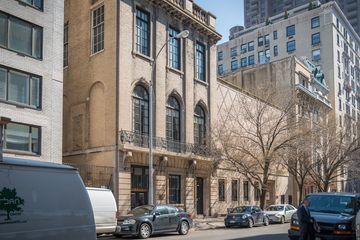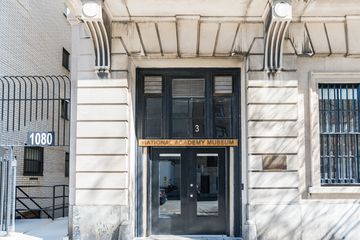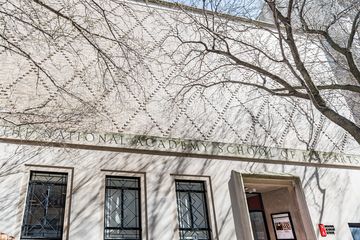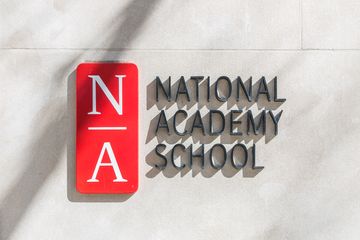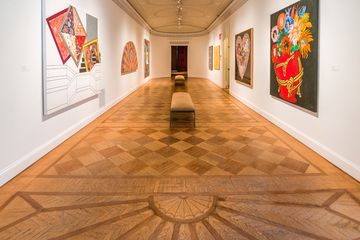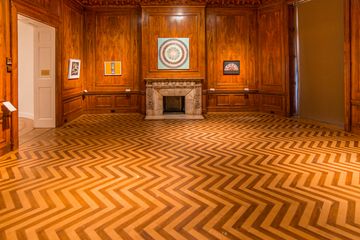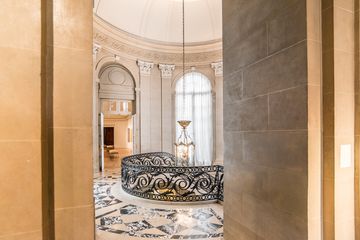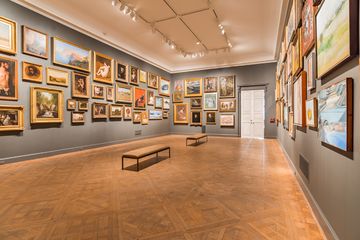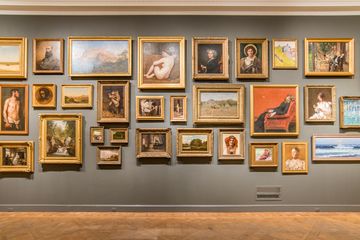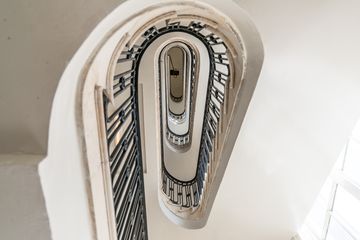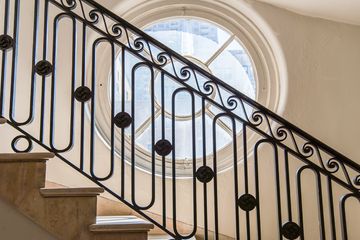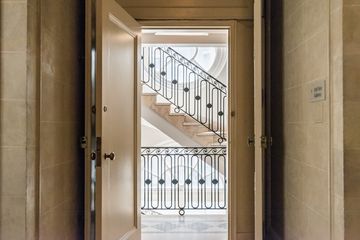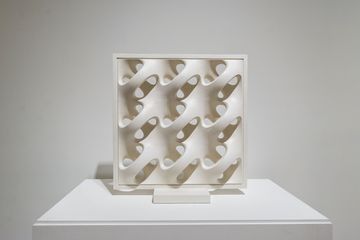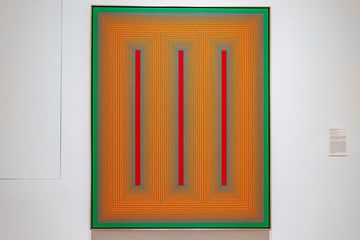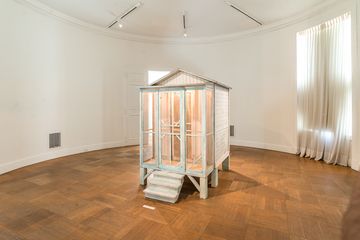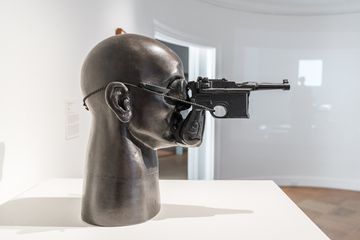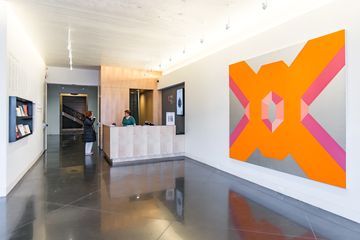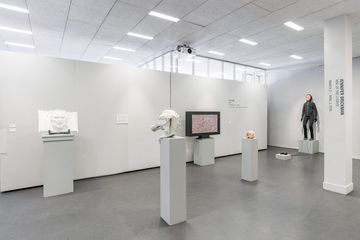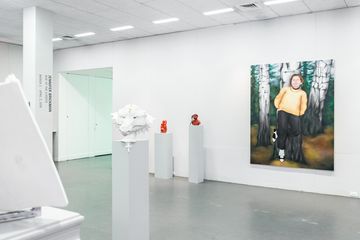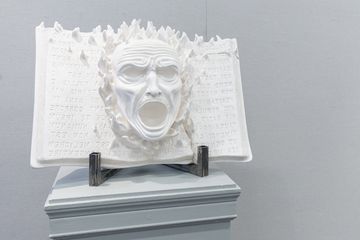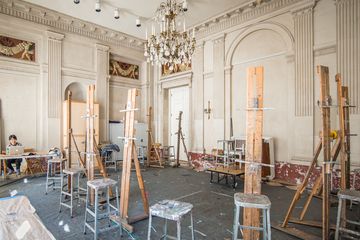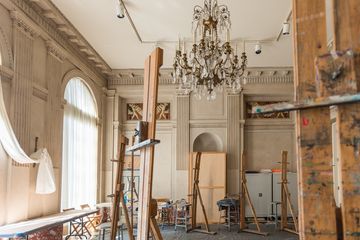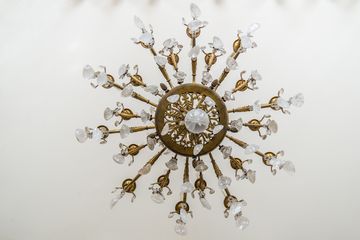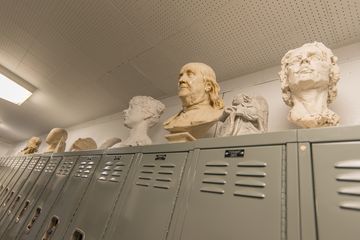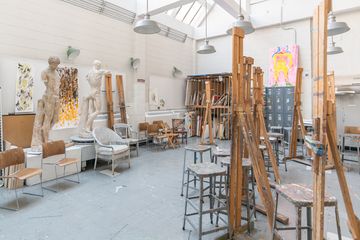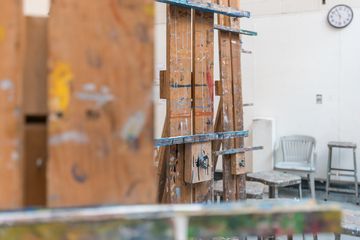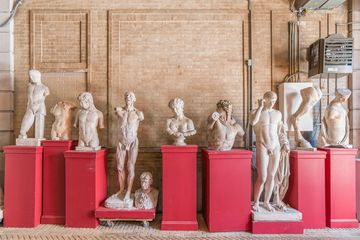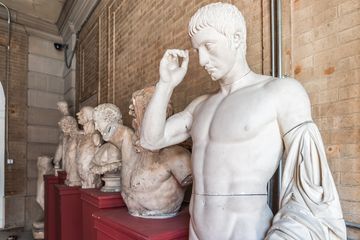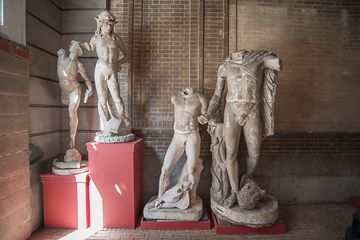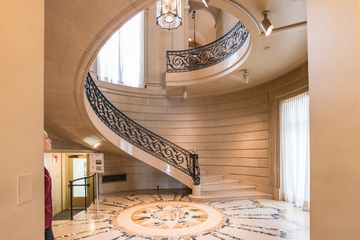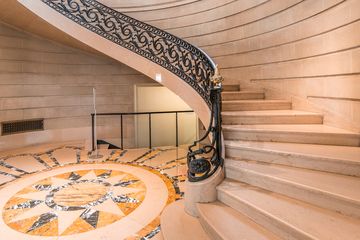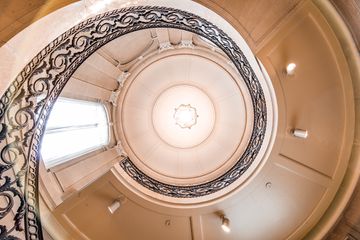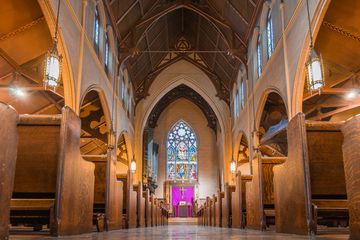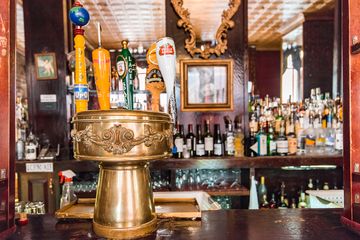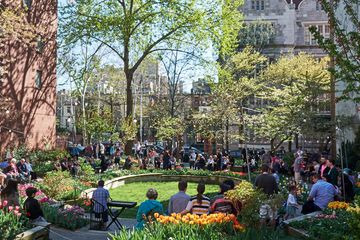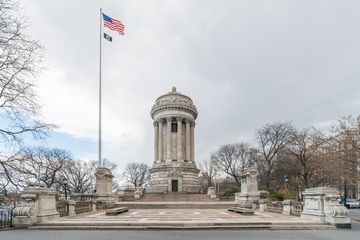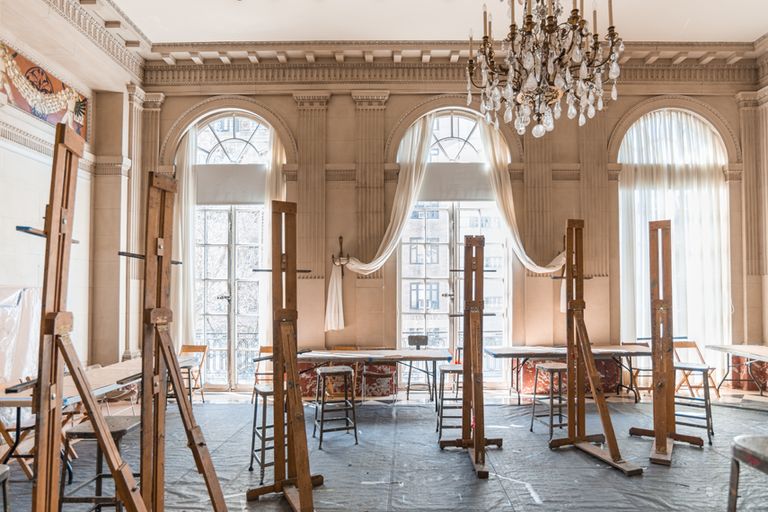
The National Academy of Fine Arts has a long and prestigious history. It was founded in 1825 with the goal, in Mary Fisher's words, of "making American Art as important as European Art." Mary is the School Administrative Director and wears many hats. She informed me that in the very beginning, the Academicians were the faculty, teaching the students their methods and techniques. Now, there over four hundred Academicians scattered throughout the globe, many of whom are well-known in the art world. To be accepted to the Academy, an artist must submit a packet of images and statements and be selected by a jury of his or her peers. Once chosen, an artist is an Academician for life. Only three Academicians, Henry Finkelstein, Rhoda Sherbell, and Mary Beth McKenzie, teach at the school, in the Drawing, Sculpture, and Painting departments respectively. The latter focuses on the old Atelier style in which easels are set up around a subject and a teacher walks the room, giving notes.
During the Academy's long life, it has had many homes, both uptown and downtown. After members of the Academy requested a space in which to show their own work and that of their students, a museum was formed, though it remained a "pop-up" institution for about a century. It was not until 1939, when Archer Milton Huntington, the heir to one of the largest fortunes in America at the time, and his wife Anna Hyatt gave the Academy their home for the price of one dollar that the Academy found its permanent residence and was able to set up the museum that is now open to the public.
As for the students of the school, they run in age from five to one hundred. There is a young artist program for students up to age seventeen, as well as a summer camp, which offers a variety of classes including drawing, mural painting, and 3D modeling and printing. Adults can choose to study full time or part time. Studio Practice students are often people who have a career, but want to continue doing art on the side. On the other hand, participants in the Studio Art Intensive take part in a full-time program. Most of the students are either international students who choose to get their MFA in New York or are retired professionals who hope to start a second career as an artist. Finally, there is a Certificate Program, where international students can take eighteen hours of class each week in order to get a Visa to study in the United States. Each of these students can take classes in subjects such as sculpture, watercolor, and printmaking. Though the Academy does have a New Media department, it is quite small and focuses mainly on supporting an artist's other work, by teaching skills such as how to photograph work for submission. As of 2015, the Academy has added a selection of Art History courses. Mary was also proud of the Professional Practice courses. The National Academy degree stands out from a traditional MFA in that there are no lecture courses: everything involves "working with your hands." For Professional Practice, this means that artists are given the chance to meet and learn from those who are established in the New York Art world, such as gallery owners, museum workers, and auctioneers. In every department, classes are capped at around twelve people in order to keep them small and personal.
Mary took me on a tour of the school and museum. When I visited, there was an exhibition in the Sonia Gechtoff Gallery called Malgosa Malinowska: "In the Forest of Memory" featuring breathtaking images of a sculpture of a dragon's head, a book with a screaming face emerging from it, and a TV screen full of glass eyeballs. We then progressed to the classrooms, starting with the Stone Room, the Huntington's former dining room that connects the museum to the school. It is decorated with columns and Greek designs and features long windows through which natural light was streaming. The next room, which held a Watercolor class when we walked by, also had natural light flooding the space through a skylight. It mirrored the next room we entered, whose skylight faced the other direction. Mary mentioned that students often took advantage of the building's architecture, choosing to take a class in the room with the good morning light until noon and then returning for a class in the room with the good afternoon light after lunch.
Next, we descended to the basement where the full-time students have their studio space. The twelve full-time students work in private studios, communal spaces, and even little nooks hidden around corners. Thanks to the building's courtyard, the basement rooms also get natural light. "The work really runs the gamut," Mary pointed out, glancing at the students' pieces in progress.
On the way to the museum, Mary stopped by the old Carriage House and adjoining hallway. The Carriage House is filled with various casts, gifted from the Metropolitan Museum of Art, eerily placed around the room. The space is often used for drawing, and in warmer weather, the large door is opened to create a semi-outdoor room. The hallway, Mary told me with a smile, used to be the trash chute. The Academy discovered, however, that this area reserved for garbage had beautiful light, and chose to clear it out and turn it into a venue for cocktail parties and film screenings.
When we entered the museum, an enormous spiral staircase took my breath away. Mary, pleased by my reaction, told me that it is now illegal to construct these massive staircases. How fortunate for the Academy that they inherited this. Featured during my visit was work both from Academicians and outside collections, including an exhibit of Miriam Shapiro's art, an Academician who does a lot of work with complex patterns, tapestries, and fabrics. There was also a "Salon" with a selection of paintings from 1825-1900. As I wandered around, I was equally impressed with the curated art as with the extraordinary architecture of the Huntington's home, and how the two interplayed. In closing, I commented on how I was surprised to find this incredible institution tucked away on the Upper East Side. Mary nodded and said, "It's our little hidden gem. Once you're here, you have access to so many resources. You just need to know it's here."
